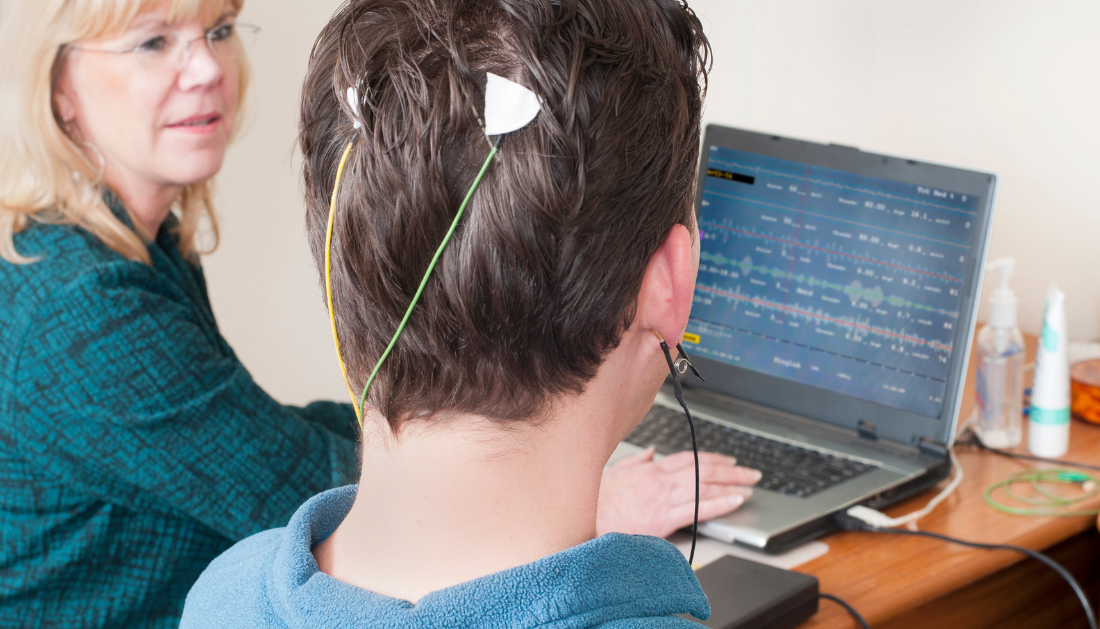

A gadget designed to allow neurosurgeons and other physicians to perform noninvasive blood-based brain biopsies on patients with brain tumors has been designated as a “Breakthrough Device” by the Food and Drug Administration (FDA). The gadget incorporates technologies developed by Cordance Medical Inc., a medical device firm based in Mountain View, California.
The designation is intended to give consumers and health-care providers faster access to new medical devices by streamlining the review process required to bring technology to market clearance.
The FDA distinction is given to devices that have undergone extensive testing and show remarkable potential of improved treatment or the ability to diagnose life-threatening or disabling diseases. Eric C. Leuthardt, MD, the Shi Hui Huang Professor of Neurosurgery at Washington University School of Medicine, and Hong Chen, PhD, an associate professor of biomedical engineering at the university’s McKelvey School of Engineering and neurosurgery at the School of Medicine, co-invented the technology.
Cordance Medical was just licensed by Washington University to use the technology. Cordance Medical, which is interested in commercializing the invention, has Leuthardt and Chen as advisers and shareholders.
The NeuroAccess device is portable and noninvasive, allowing clinicians to forgo high-risk brain surgery in order to get blood-based liquid samples from patients with known or suspected brain tumors. The device employs sonobiopsy, a technique that focuses on the blood-brain barrier, a protective, semi-permeable membrane that keeps hazardous compounds in the blood from contaminating delicate brain tissue. The interaction of ultrasound with microbubbles momentarily opens the blood-brain barrier, allowing RNA, DNA, and proteins from the brain to seep into the blood.
“The sonobiopsy approach is a revolution in brain diagnostics,” said Leuthardt, a biomedical engineering, mechanical engineering, and neuroscience professor. “Sonobiopsy will transform how we examine the brain on a molecular level, just as magnetic resonance imaging (MRI) transformed how we look at the anatomy of the human brain.” Essentially, we’re performing a brain biopsy without the substantial dangers associated with brain surgery.”
The researchers published a study in the journal NPJ Precision Oncology in September that indicated sonobiopsy was viable and safe for application in humans.
“The breakthrough designation is the success of a team that spans numerous disciplines ranging from medicine, engineering, genetics, neuroscience and entrepreneurship to bring this concept from a very basic scientific model to an ongoing clinical trial,” Leuthardt said in a press release. “This is a triumph of collaboration.”
“Sonobiopsy is poised to open doors to diagnose brain diseases where surgical biopsies are often not an option,” said Chen, who is also a professor of radiation oncology and radiology. The method opens up new avenues for diagnosing neurodevelopmental, neurodegenerative, and psychiatric problems.”
Leuthardt is the director of the Division of Neurotechnology in the Department of Neurosurgery, and Chen is a member of the Division of Neurotechnology, which focuses on multidisciplinary research to create novel engineered solutions that can be applied to patients with neurologic illnesses. The sonobiopsy technology is patented by Washington University.
more recommended stories
 Safer Allogeneic Stem Cell Transplants with Treg Therapy
Safer Allogeneic Stem Cell Transplants with Treg TherapyA new preclinical study from the.
 AI in Emergency Medicine and Clinician Decision Accuracy
AI in Emergency Medicine and Clinician Decision AccuracyEmergency teams rely on rapid, accurate.
 Innovative AI Boosts Epilepsy Seizure Prediction by 44%
Innovative AI Boosts Epilepsy Seizure Prediction by 44%Transforming Seizure Prediction in Epilepsy Seizure.
 Hypnosis Boosts NIV Tolerance in Respiratory Failure
Hypnosis Boosts NIV Tolerance in Respiratory FailureA New Approach: Hypnosis Improves NIV.
 Bee-Sting Microneedle Patch for Painless Drug Delivery
Bee-Sting Microneedle Patch for Painless Drug DeliveryMicroneedle Patch: A Pain-Free Alternative for.
 AI Reshapes Anticoagulation in Atrial Fibrillation Care
AI Reshapes Anticoagulation in Atrial Fibrillation CareUnderstanding the Challenge of Atrial Fibrillation.
 Hemoglobin as Brain Antioxidant in Neurodegenerative Disease
Hemoglobin as Brain Antioxidant in Neurodegenerative DiseaseUncovering the Brain’s Own Defense Against.
 Global Data Resource for Progressive MS Research (Multiple Sclerosis)
Global Data Resource for Progressive MS Research (Multiple Sclerosis)The International Progressive MS Alliance has.
 AI Diabetes Risk Detection: Early T2D Prediction
AI Diabetes Risk Detection: Early T2D PredictionA new frontier in early diabetes.
 Cancer Cells Learn to Self-Report: A New Frontier in Immunotherapy
Cancer Cells Learn to Self-Report: A New Frontier in ImmunotherapyHow a Drug Complex Enables Immune.

Leave a Comment